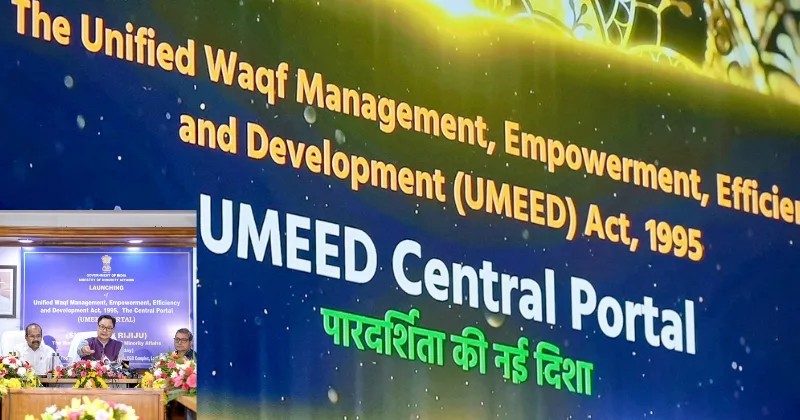UMEED Portal Launched to Monitor Waqf Properties
UMEED Portal Launched to Monitor Waqf Properties
Why in the News?
Union Minority Affairs Minister Kiren Rijiju launched the UMEED portal for real-time monitoring of Waqf properties. The digital platform aims to enhance transparency, accountability, and public participation, ensuring better governance and protection of minority community assets across India.
Key Features and Functions:
- The portal includes a digital inventory of Waqf properties with geotagging.
- It integrates GIS mapping and other e-governance tools.
- An online grievance redressal mechanism is incorporated for improved responsiveness.
- The platform ensures public access to verified records, promoting transparency and reducing misuse of community-owned assets.
Broader Significance and Government Vision
- UMEED is part of the government’s push to safeguard minority rights and ensure that Waqf assets are used fairly and efficiently.
- The initiative reflects the commitment to inclusive governance and effective resource utilisation for the welfare of poor Muslims.
- It is not just a tech upgrade, but a symbolic move toward greater trust and participation in public asset management.
What is the UMEED Portal? |
|
● The UMEED (Unified Waqf Management, Empowerment, Efficiency and Development) portal is a centralised digital platform launched by the Ministry of Minority Affairs. |
|
● It enables real-time uploading, verification, and monitoring of Waqf assets. |
|
● The initiative seeks to bring a paradigm shift in the administration of Waqf properties by enhancing efficiency and inclusiveness. |
|
● Union Minister Kiren Rijiju called the launch a historic step toward empowering Muslims, especially women and children. |
The UMEED portal represents a significant step forward in the monitoring and management of Waqf properties. By leveraging technology for Waqf properties monitoring, the government aims to ensure that these valuable community assets are utilized effectively for the benefit of minority communities. This initiative aligns with broader efforts to promote transparency, accountability, and efficient resource management across various sectors of governance.





